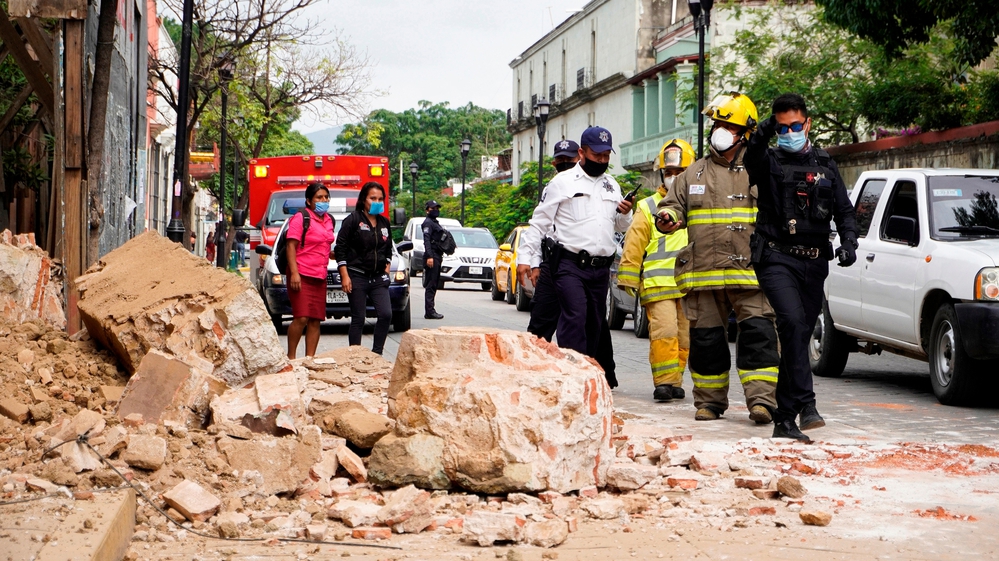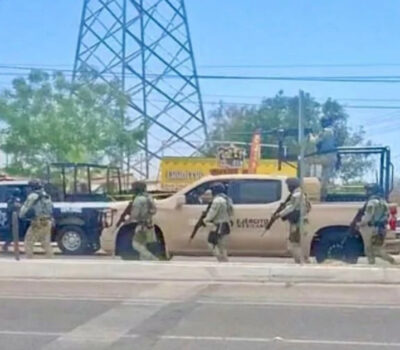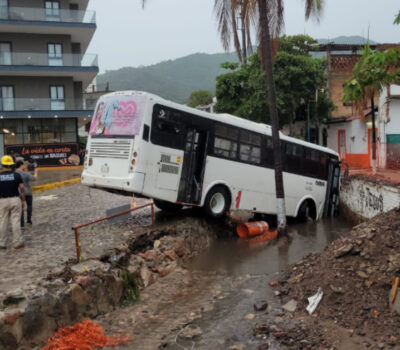An earthquake of magnitude 7.5 shook southern and central Mexico on Tuesday, leaving at least six dead, 30 wounded, and some damage in areas near its epicenter in the state of Oaxaca, one of the poorest in the country.
Its waves were felt even in Puebla and Mexico City (CDMX), where the ruins and traumas of the tremor three years ago are still a daily nightmare for many of its residents.
Although the earthquake on Tuesday was greater in magnitude than that of September 19, 2017, its effects in the capital city and in other places where it was felt were considerably less.
Three years ago, more than 300 people lost their lives in CDMX alone, where dozens of buildings collapsed and where there are still lots and empty buildings with cracked walls as unequivocal signs of the tragedy.
And although this Tuesday, neighborhoods like La Roma and Condesa saw their structures shake again, it was nothing close to the chaos and destruction of three years ago.
As Xyoli Pérez Campo, director of the National Seismological Service of Mexico, explains each earthquake is different and several factors affect its destructive potential, in which the magnitude is only one of them.
“There are elements beyond magnitude that ultimately decide how devastating an earthquake will be, that is, in its intensity,” he says.
“The magnitude, with which we refer to the size, the area that breaks, the energy that is released, is one of them, but not the only one,” he adds.
According to the expert, another element is the distance from the inhabited places to the point where the tremor had its epicenter: the closer the greater the destruction.
“For example, the earthquake of September 7, 2017, was of magnitude 8.2, the intensity in the epicentral zone was much higher. But the intensity that we perceived in Mexico City was much less than today because we are much further,” he says.
“If we compare it with that of September 19, 2017, which had a smaller magnitude of 7.1, it released less energy in the epicentral zone and therefore less effects were noticed in that area than that of this morning. However, in Mexico City, due to the proximity and another series of factors, it was more destructive than the one that occurred today,” he adds.
The two major earthquakes of 2017, he points out, occurred in the Cocos Plate, in two completely different faults, one in central Mexico and the other in the Tehuantepec Gulf area.
“This morning’s took place in an area where the Cocos Plate and the North American Plate make contact. These events are known as interplate or subduction earthquakes and are different from those of three years ago,” he adds.
He points out that the depth at which the earthquake occurs may also imply that it feels more or less strongly.
Pérez Campo said that another element that will be decisive in the destructive potential of an earthquake is the geology of the place where it occurs.
“We can have two locations at the same distance, but one has geological conditions that allow the waves to pass without any problem, so the damage will be less. While the other has a geology that makes the waves accumulate or reverberate and therefore experience a more violent shock,” he says.
Is it possible another earthquake of greater magnitude will occur in the coming days?
Since the first tremor occurred on Tuesday morning, Mexico’s seismic stations have been detecting hundreds of aftershocks.
“An aftershock by definition is a minor earthquake that occurs after the main earthquake and in the same epicentral area,” he explains.
According to the expert, as of 4:30 pm local time on Tuesday, about 447 minor tremors had been recorded in the area.
Pérez Campo comments that after earthquakes of great magnitude this type of phenomenon usually occurs in which aftershocks continue until they disappear or, on the contrary, can lead to a much larger earthquake.
“Earthquakes cannot be predicted, but according to the records, there is a chance, somewhat small, that when a large earthquake occurs, it may not have been the largest, but a larger earthquake may occur in the same area. epicentral,” he warns.
“That possibility exists but there is no way of knowing. Hence, the recommendation to the population is to always be prepared. The earthquakes cannot be predicted and there is no way of knowing if another one will hit us soon. Mexico lives in a very complex tectonic area and this makes it very prone to these earthquakes.”
An earthquake of magnitude 7.5 shook southern and central Mexico on Tuesday, leaving at least six dead, 30 wounded, and some damage in . . .












